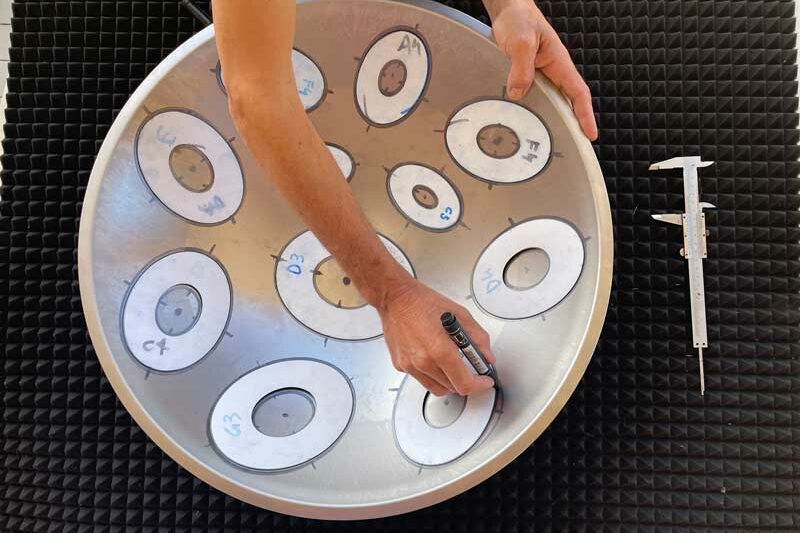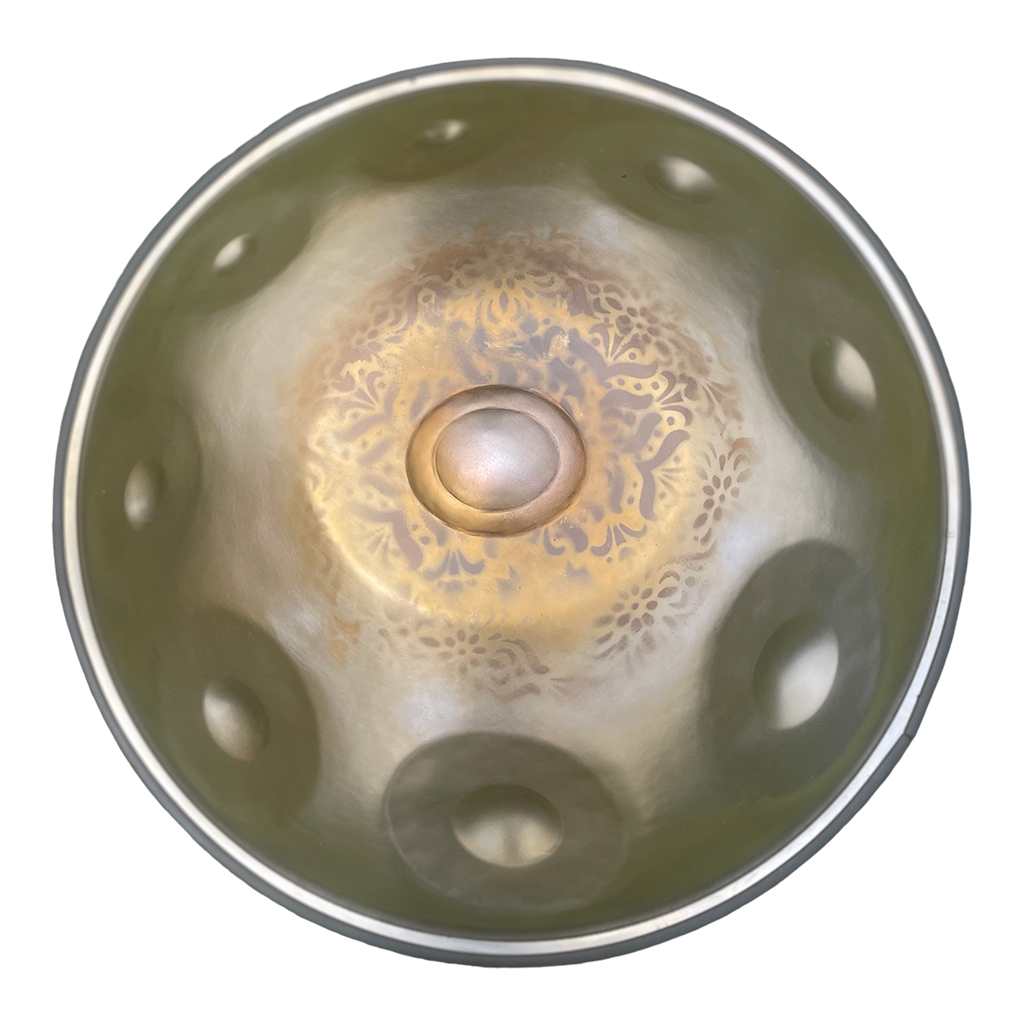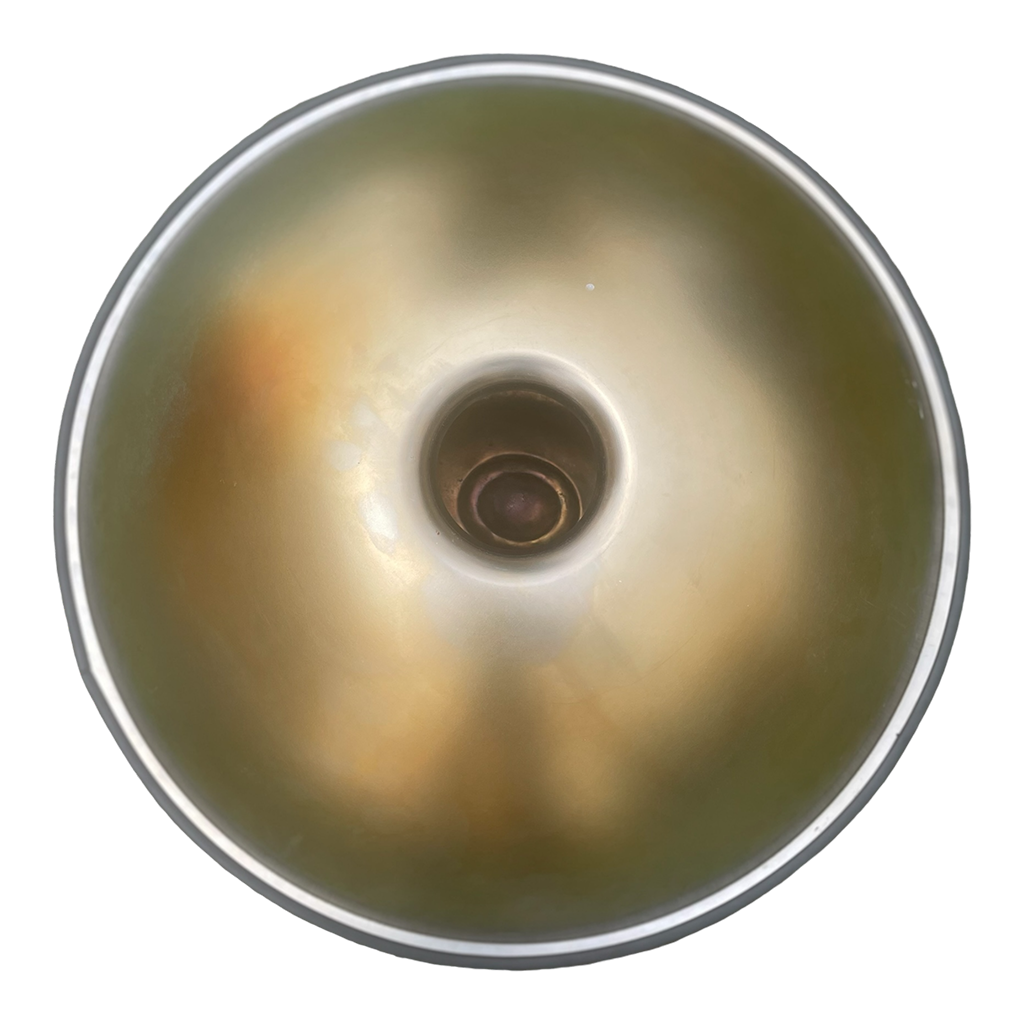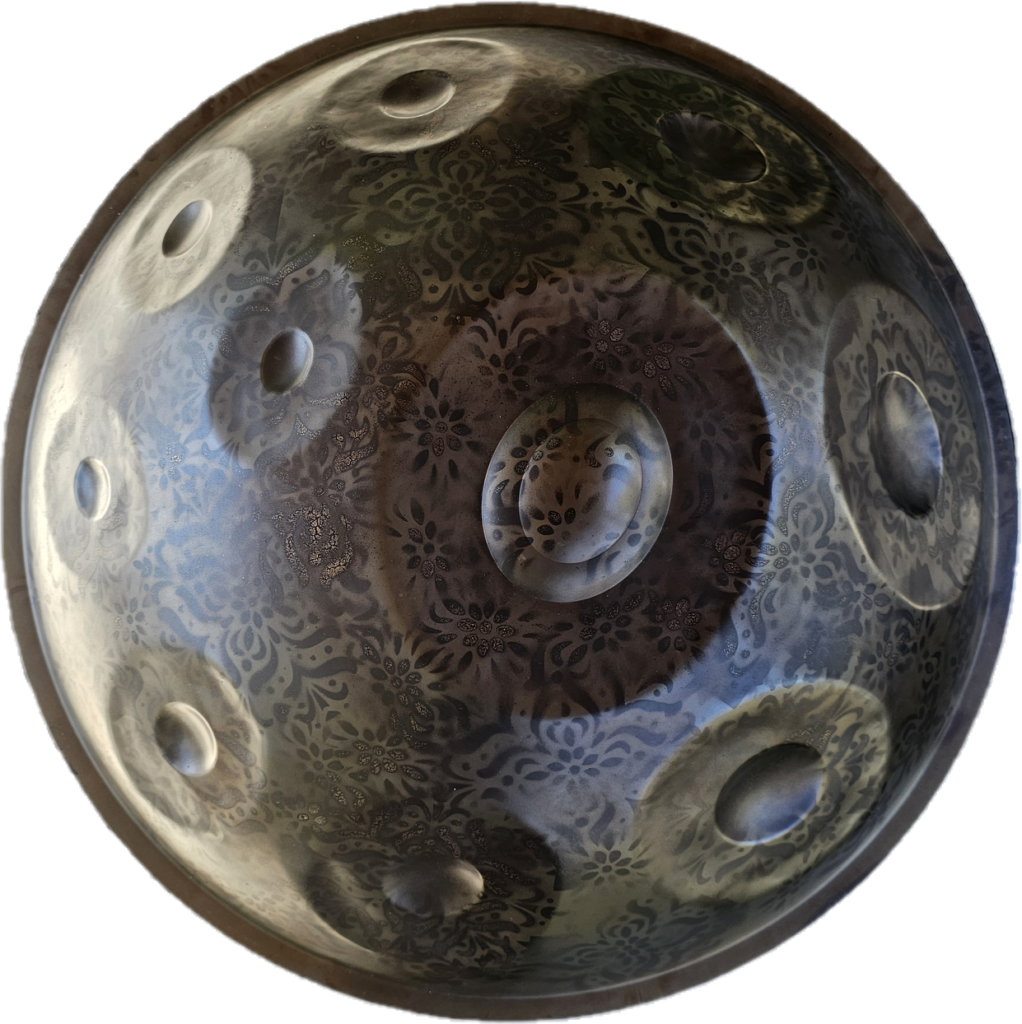About the handpan
Discover the handpan, how it is made and how it is played.
What is the handpan?
The handpan is an idiophone instrument made of two convex piece of steel glued together creating a resonating chamber. Musical notes are carved into the surface of the top shell, while the bottom shell features a hole, also tuned to a specific note. The central note, called the “Ding,” has a convex shape, unlike the others, which appear as dimples. The tonefields on the handpan have an elliptical shape, with a long and a short axis. A good quality handpan has a specific harmonic frequency tuned in each axis. On the long axis, there is the octave of the note, and on the short axis, the fifth of the note. For example, if the note is a D3, the octave is D4 and the fifth is A4.
Each handpan is tuned to a specific musical scale, such as Major or Minor. This make it an intuitive instrument, ideal for free improvisation.
The handpan can generate a wide variety of sounds, both percussive and melodic, adapting perfectly to any musical context.
Its characteristic ethereal sounds create beautiful atmospheres. For this reason the handpan is particularly suitable for accompanying introspective practices such as yoga and meditation.
Being an intuitive instrument, the handpan is able to attract even those who have never played a musical instrument before.
How a handpan is made?
The handpan is a sound sculpture, shaped and tuned with various hammers. Its construction is an art that requires a balance of technical skills and musical sensitivity. The production process consists of several stages, each crucial for creating a high-quality instrument.
It all starts with a sheet of steel that, through a process called deep drawing, is transformed into shells. Once the shells are formed, the layout of the musical scale is designed. This is a critical step to ensure a balanced sound. If the notes are too close or directed towards each other, the shared harmonic frequencies will generate interference, compromising the sound quality. Therefore, planning the layout becomes a delicate operation, especially if the goal is to include many notes on the instrument.

Next, the shells are shaped. With a mechanical press, the dimples are created. Then the tonefields are defined by hammering the dome. At this stage, the notes receive their initial tuning, then the shells are baked and tuned to achieve a harminc structure.
Once the shells are glued together, the instrument takes its final shape. Now is the time for the final tuning.
Perfectly tuning each note while ensuring that the handpan has a balanced sound and maintains its tuning over time is a task that requires extensive experience. Our handpans are designed directly by us with particular care for both design and tuning.

Top shell

Bottom shell
How to play a handpan?
The handpan was originally thought for spontaneous improvisation. However, over time, real musical techniques have developed. Some of these techniques came from other instruments (percussions, but also guitar and piano) while others have been created specifically for the handpan.
Being a young instrument, its technique is still evolving. For example, its original 9-note extension has been expanded, creating handpans with more notes arranged on both the top and bottom shells. These and other innovations have created new musical possibilities.
Today, many people take classes to learn those techniques, but the handpan remains in its essence an intuitive instrument. Those who desire it can still improvise, play it and let themselves be carried away by emotions.
How to take care of a handpan
The handpan is made of steel. To protect it from oxidation and maintain its tuning over time, follow these tips:
- Do not expose it to the sun or heat sources to avoid losing its tuning.
- Avoid contact with water.
- Do not keep it in humid places or those with temperature fluctuations.
- Do not store it inside its bag.
- Avoid impacts and do not hit it with sticks or other objects.
- Remember to play it softly with your individual fingers.
- Always use a protective case when trasporting it.
- Clean it with a cotton or microfiber cloth. After cleaning, we recommend periodically applying a few drops of oil on its surface

The handpan is a very versatile harmonic percussion that adapts perfectly to any musical context.
In our shop you can find professional and high-quality handpans. Each Alchemy is a unique piece, made entirely by hand, with great attention to detail and precision in tuning.
The high quality materials, stainless steel and ember steel, guarantee a warm and enveloping sound, rich in harmonics. Let yourself be inspired by the sound and design of our handpans and start your musical journey now.

The handpan is a magical instrument, capable of fascinating anyone who listens to it…
